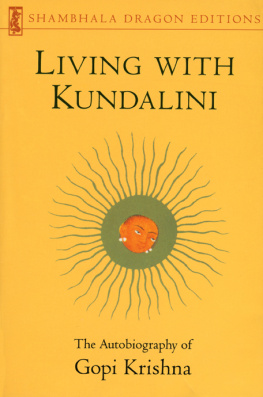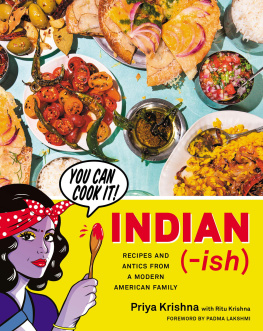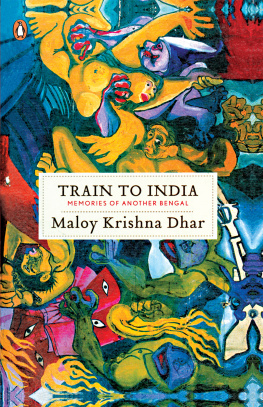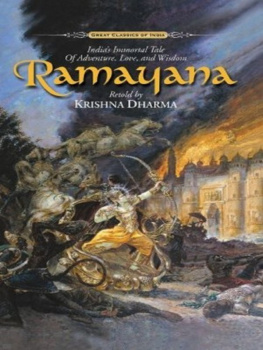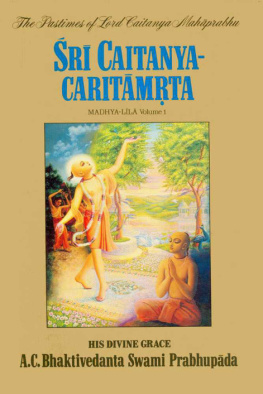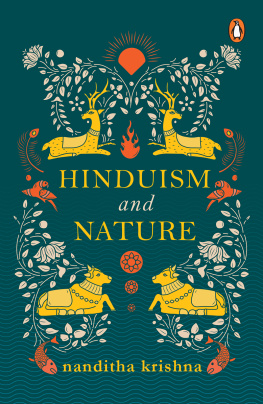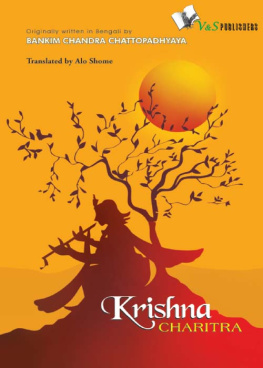Krishna - Sacred Animals of India
Here you can read online Krishna - Sacred Animals of India full text of the book (entire story) in english for free. Download pdf and epub, get meaning, cover and reviews about this ebook. City: India, year: 2014;2012, publisher: Penguin Books Ltd;Penguin Books India, genre: Religion. Description of the work, (preface) as well as reviews are available. Best literature library LitArk.com created for fans of good reading and offers a wide selection of genres:
Romance novel
Science fiction
Adventure
Detective
Science
History
Home and family
Prose
Art
Politics
Computer
Non-fiction
Religion
Business
Children
Humor
Choose a favorite category and find really read worthwhile books. Enjoy immersion in the world of imagination, feel the emotions of the characters or learn something new for yourself, make an fascinating discovery.

Sacred Animals of India: summary, description and annotation
We offer to read an annotation, description, summary or preface (depends on what the author of the book "Sacred Animals of India" wrote himself). If you haven't found the necessary information about the book — write in the comments, we will try to find it.
Krishna: author's other books
Who wrote Sacred Animals of India? Find out the surname, the name of the author of the book and a list of all author's works by series.
Sacred Animals of India — read online for free the complete book (whole text) full work
Below is the text of the book, divided by pages. System saving the place of the last page read, allows you to conveniently read the book "Sacred Animals of India" online for free, without having to search again every time where you left off. Put a bookmark, and you can go to the page where you finished reading at any time.
Font size:
Interval:
Bookmark:
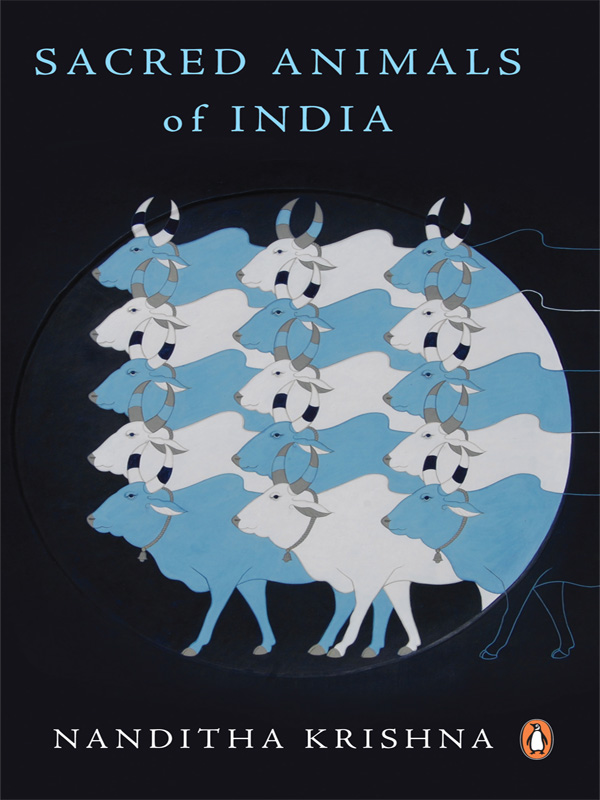
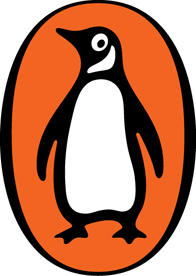

PENGUIN BOOKS
Nanditha Krishna is a historian, environmentalist, and writer based in Chennai. A PhD in ancient Indian culture, she is the director of the C.P. Ramaswami Aiyar Foundation and C.P.R. Environmental Education Centre. She has pioneered the documentation of the ecological traditions of India, restored over fifty sacred groves, and established schools, a research institution, and a museum of folk art. Her published works include Sacred Animals of India, Book of Demons, Book of Vishnu, Madras Then Chennai Now, Balaji-Venkateshwara, Ganesha, Painted Manuscripts of the Sarasvati Mahal Library, Arts and Crafts of Tamilnadu,and Art and Iconography of Vishnu Narayana, besides numerous research papers and newspaper articles. She is a professor and research guide for the PhD programme of the University of Madras and has received several prestigious national and international awards.
The Book of Vishnu
The Book of Demons
For the many animals who are part of our everyday world
and bring us joy, and for those that suffer needlessly
as a result of human cruelty.
vidyvinayasampanne brhmane gavi hastini
uni caiva vapke ca padit samadarina
(Those who are wise and humble treat equally,
the Brahmin, cow, elephant, dog and dog-eater)
Bhagavat Gita, 5.19
Sacred Animals of India was planned for the Asia for Animals Conference held in January 2007 at Chennai. However, when I began researching the subject, I discovered a wealth of material that was impossible to ignore. So I decided to cover the subject in greater depth.
This book was first published as a limited edition by C.P.R. Environmental Education Centre (CPREEC), for release during the National Conference on the Environment and Indian History held at Chennai in January 2008. It has been expanded to include many more myths and legends involving animals, and rewritten for a more general readership.
My love for animals was instilled in me by my late father, A.R. Jagannathan, a wildlife enthusiast who took me to so many national parks and sanctuaries that I became an avid environmentalist. He was an ardent Hanuman devotee, while my late Ganesha-worshipping mother Shakunthala Jaganathan and I jointly wrote a book GaneshaThe Auspicious The Beginning (Vakils, Feffer and Simons Ltd) in 1992. The seed for this book was probably sown long ago by my parents.
None of this would have been possible without the interest and involvement of Ravi Singh and Udayan Mitra of Penguin, who encouraged me to complete the book quickly, and Archana Shankar, my editor. Thank you, Ravi, Udayan and Archana.
Several people helped me in so many ways: M. Amirthalingam assisted me right through my research, especially in finding the correct names for each animal in various languages. Dr T. Sundaramurthi and P. Sudhakar of C.P.R. Environmental Education Centre, Chennai, and Dr A. Raman of Orange University, Australia, gave the zoological information and ecological role of each animal. G. Balaji searched for illustrations in the private collection of the C.P. Ramaswami Aiyar Foundation and H. Manikandan kept track of all the materials. My husband Dr S. Chinny Krishna, who is also the chairman of the Blue Cross of India, updated me on animal welfare issues in India. He also read, re-read, questioned and edited the book. My sincere thanks to all of them.
Once we decided to illustrate this book with drawings, Y. Venkatesh went through the ardous task of sketching each figure. It was a difficult task to make elaborate pictures of Ganesha and Gajalakshmi into simple sketches, but he did it, I believe, very successfully.
Every animal is introduced with the myths and legends that establish its religious status, followed by a short note on the ecological or social role of the animal, which made it important in peoples lives. The problems of its survival and treatment in todays world have also been covered.
I have tried to provide the Hindi, Tamil and Sanskrit names for each animal and/or the local name in the state where it is specially revered, for many animals are restricted to specific geographic areas.
An appendix on Sacred Animals and Animal Divinities of Ancient Mesopotamia and Egypt has been included. While all ancient civilizations revered animals, the similarities between these neighbours and India require special emphasis. Further, although they may be of greater antiquity than the Indian examples, they have been restricted to an appendix so that they do not divert attention from the main topic of the book.
This book is dedicated to the many dogs and one cat who gave me so much love and companionship over the years, and to the many animals who have suffered and continue to suffer at human handsbullocks pulling overloaded carts, cattle and goats trucked or walked for days without food or water, animals fattened and killed agonizingly to provide man with a plate of rich food, wildlife hunted from fast-moving vehicles with technically sophisticated weapons the list is endless. May they find peace in their future lives.
This book does not whitewash the problems faced by animals. Rather, it is a timely reminder of traditions that once gave animals protection from human inhumanity. India had a rich heritage of respect for all life forms. This respect has been destroyed, without being replaced by anything similar or better. Unless we protect our wildlife from hunting and extinction, and our domestic animals from cruelty, we are not fit to call ourselves educated, or even a people who inherited the great legacy of ahimsa or non-violence.
Nanditha Krishna
Chennai
The ancient religions of IndiaHinduism, Buddhism and Jainismhave never differentiated between the soul of a human being and the soul of an animal. All life forms are subject to the cycle of birth, death and rebirth. The liberation of the soul depends on ones karmas or actions, and one goes through several births till the soul realizes the truth. Thus a person, an animal and an insect are equally part of the cycle of life, death and rebirth. Finally, when good karmas lead to self-realization, the soul is liberated from the cycle of samsara. This is moksha or nirvana, the ultimate liberation of the individual soul, leading it to oneness with the Supreme Being or Brahman. Everything has been created by the Supreme Being, comes from the Supreme Being and returns to the Supreme Being. Animals are sacred because people identify with them, an identity born of the belief in karma and the transmigration of souls.
Ancient civilizations revered nature in all its aspects. In Indian traditions, the proper balance of the pancha bhuta (five elements)prithvi (earth), vayu (wind), akasha (sky or space), apa (water) and agni (fire or energy)is essential for the harmony and balance of life on earth. All life forms contribute equally to the balance of these five elements.
The worship of animals probably began very early in human history, when human beings were struggling to survive in a hostile environment. Man and animal have coexisted since the beginning of creation, sometimes in harmony and at other times in hostility, as they fought over limited resources. The carnivores with their strength, speed and physical prowess were feared and had to be overcome. The human brain created tools to achieve superiority over animals and this led to the development of cultures and civilizations. The respect for a powerful adversary made him into a god, worshipped out of fear.
Font size:
Interval:
Bookmark:
Similar books «Sacred Animals of India»
Look at similar books to Sacred Animals of India. We have selected literature similar in name and meaning in the hope of providing readers with more options to find new, interesting, not yet read works.
Discussion, reviews of the book Sacred Animals of India and just readers' own opinions. Leave your comments, write what you think about the work, its meaning or the main characters. Specify what exactly you liked and what you didn't like, and why you think so.

